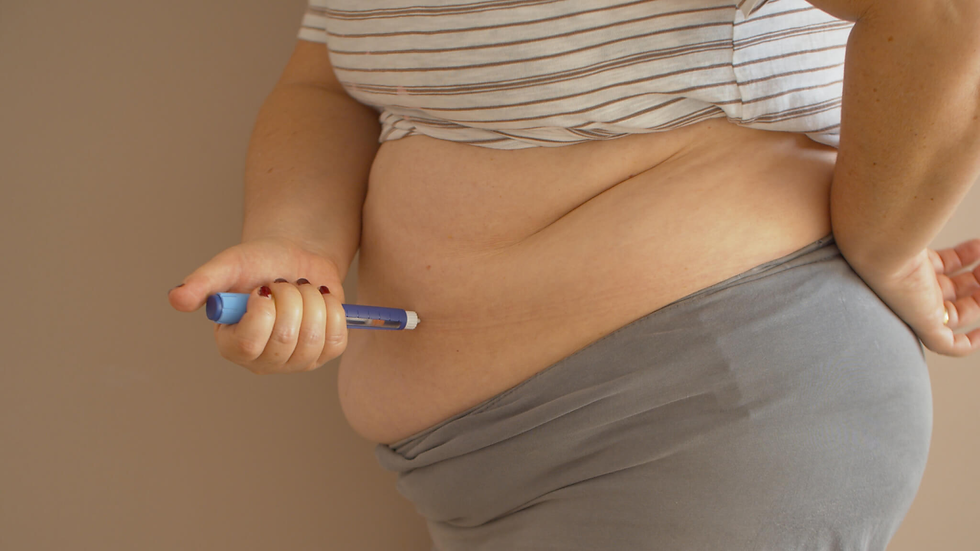Unveiling the Science Behind Posterior Repair in Dubai
- kishwar adnan
- May 4, 2024
- 3 min read
Introduction
Posterior repair, also known as posterior colporrhaphy, is a surgical procedure aimed at repairing weakened or damaged tissues in the posterior vaginal wall. This procedure is commonly performed to address conditions such as rectocele, where the rectum bulges into the vagina, causing discomfort and other symptoms. In Dubai, as in many parts of the world, Posterior Repair In Dubai is a significant aspect of gynecological care. Understanding the scientific principles behind this procedure is crucial for both patients and medical professionals.
Anatomy and Physiology
Before delving into the science of posterior repair, it's essential to understand the anatomy and physiology of the pelvic floor. The pelvic floor is a complex network of muscles, ligaments, and connective tissues that support the pelvic organs, including the bladder, uterus, and rectum. Weakness or damage to these structures can lead to pelvic organ prolapse, a condition where one or more organs descend into the vaginal canal.

Etiology of Posterior Wall Prolapse
Posterior wall prolapse, or rectocele, can occur due to various factors, including childbirth, aging, chronic constipation, and connective tissue disorders. During childbirth, the muscles and tissues of the pelvic floor can stretch or tear, weakening the support structures and predisposing women to prolapse later in life. Chronic straining during bowel movements, often associated with constipation, can also contribute to the development of rectocele.
Diagnostic Evaluation
Diagnosing posterior wall prolapse typically involves a thorough medical history, physical examination, and additional tests such as pelvic floor imaging or dynamic pelvic floor ultrasound. These evaluations help healthcare providers assess the extent of the prolapse and identify any associated conditions that may require concurrent treatment.
Surgical Techniques
Several surgical techniques may be employed to repair posterior wall prolapse, depending on the severity of the condition and the patient's overall health. Traditional posterior repair involves the excision of excess vaginal tissue and the plication of the underlying connective tissues to restore support to the rectovaginal septum. However, newer approaches, such as robotic-assisted or laparoscopic posterior repair, offer minimally invasive alternatives with potentially faster recovery times and reduced risk of complications.
Biomechanics of Tissue Repair
The success of posterior repair relies on the biomechanical principles of tissue healing and regeneration. After surgery, the body initiates a cascade of cellular and molecular events aimed at repairing the damaged tissues. Fibroblasts, specialized cells responsible for collagen synthesis, migrate to the site of injury and deposit new extracellular matrix, strengthening the repaired tissues over time. Understanding these processes helps surgeons optimize surgical techniques and postoperative care to promote optimal outcomes.
Complications and Considerations
Like any surgical procedure, posterior repair carries risks, including infection, bleeding, and recurrence of prolapse. Patients undergoing posterior repair in Dubai should be educated about these potential complications and advised on strategies to minimize their risk, such as maintaining a healthy lifestyle, avoiding heavy lifting, and attending postoperative follow-up appointments as recommended.
Rehabilitation and Long-Term Management
Rehabilitation plays a crucial role in the long-term success of posterior repair. Pelvic floor physical therapy, including exercises to strengthen the pelvic floor muscles and improve bowel function, can help optimize surgical outcomes and reduce the risk of recurrence. Additionally, lifestyle modifications, such as maintaining a healthy weight and avoiding activities that strain the pelvic floor, can support the integrity of the repaired tissues over time.
Conclusion
In conclusion, posterior repair is a cornerstone of gynecological care in Dubai, addressing the anatomical and functional issues associated with posterior wall prolapse. By understanding the scientific principles underlying this procedure, both patients and healthcare providers can make informed decisions regarding treatment options and postoperative care. With advancements in surgical techniques and rehabilitation strategies, the outlook for patients undergoing posterior repair continues to improve, offering hope for a better quality of life and enhanced pelvic health.







Comments